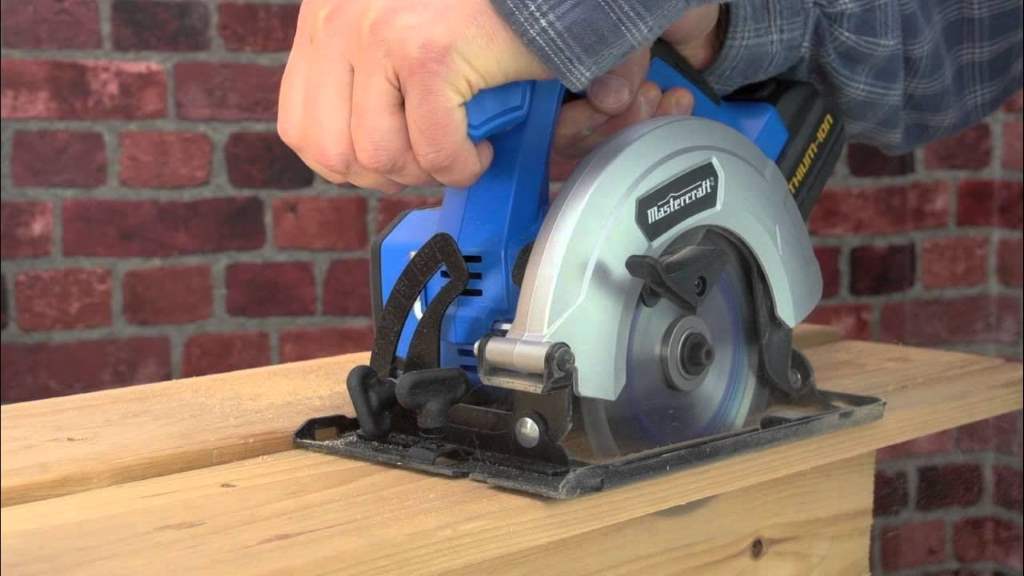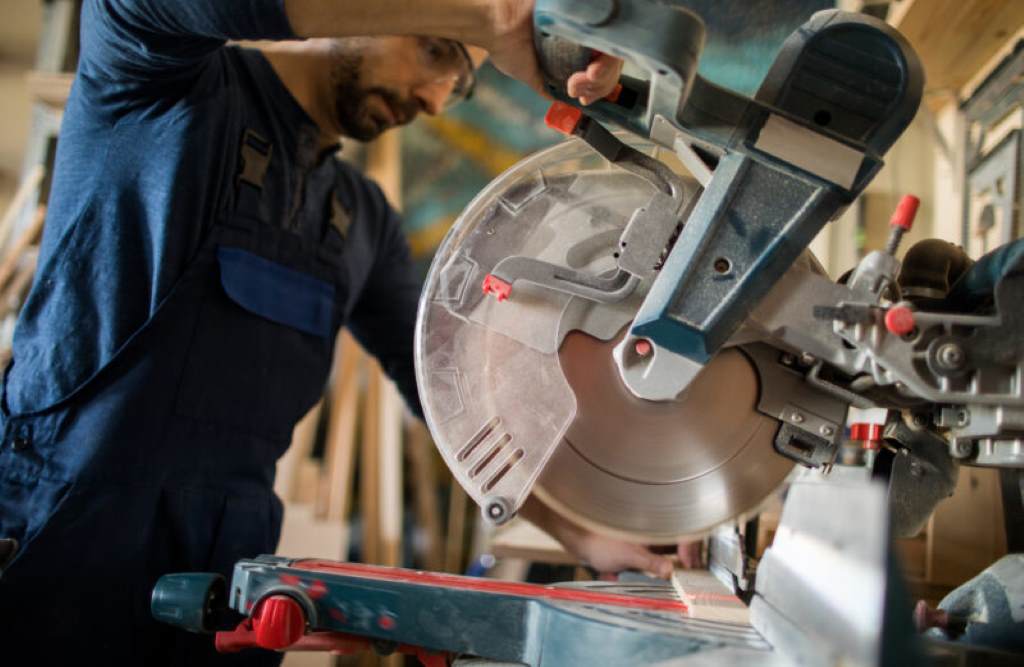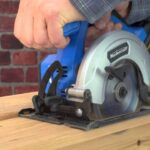
Imagine transforming your cluttered garage into a seamless workshop where cords no longer trip you up. You grab your tool, charge it overnight, and dive into building a shelf or trimming lumber without hassle. Battery-powered woodworking saws make this freedom a reality for hobbyists and pros alike. These versatile devices deliver clean cuts on the go, ideal for everyday tasks like home repairs or custom furniture. For instance, the Battery-powered woodworking saw like the tested Ryobi model showcases reliable performance in real-world tests.
According to the U.S. Consumer Product Safety Commission via PubMed Central, over 75,000 saw-related injuries occur annually in the U.S., highlighting the need for smart choices. Meanwhile, the DIY power tools market reached USD 15.2 billion in 2024 and projects growth to USD 25.7 billion by 2033, per Precedence Research, as more enthusiasts embrace cordless convenience. This guide empowers you to select the right one, ensuring safety and efficiency every time.
Why Go Cordless? Benefits for DIY Enthusiasts
Cordless power tools for DIY projects revolutionize how you approach woodworking. They eliminate the frustration of extension cords snaking across your workspace. Instead, you move freely, tackling tasks in tight spots or outdoors without outlets nearby.
Moreover, these saws boost productivity. Recent innovations, like Kreg’s 2025 cordless lineup, integrate smart batteries that last longer under load. You finish cuts faster, reducing fatigue during marathon sessions.
Additionally, environmental perks shine through. Battery models run quieter than gas alternatives, minimizing noise pollution in neighborhoods. They also produce zero emissions, aligning with sustainable practices.
For example, a homeowner renovating a deck appreciates the portability. No more dragging heavy generators; just swap batteries and continue. Therefore, cordless options enhance creativity, letting ideas flow without interruptions.
However, not all batteries perform equally. Understanding voltage differences prevents mid-task letdowns. Overall, embracing cordless tech elevates everyday woodworking from chore to joy.

Types of Battery-Powered Woodworking Saws
Selecting the correct type starts with matching the tool to your needs. Battery-powered saws come in various forms, each excelling in specific cuts. Explore these options to find your fit.
Circular Saws: Powerhouses for Straight Cuts
Circular saws dominate for ripping through plywood or framing lumber. Their round blade spins rapidly, delivering precise, straight lines. Professionals favor them for speed on large sheets.
Furthermore, modern versions feature adjustable bases for bevel cuts up to 45 degrees. You bevel edges effortlessly for angled joints in cabinetry.
In addition, lightweight models under 10 pounds reduce strain during overhead work. Pair one with a guide rail for flawless results on tabletops.
For instance, during a 2025 Pro Tool Reviews roundup, testers praised circular saws for balancing power and maneuverability in home builds. Thus, they suit broad everyday applications.
Jigsaws: Versatile for Curved and Intricate Work
Jigsaws shine in detailed tasks, like cutting curves for decorative panels. Their narrow blade orbits up or down, enabling tight turns without splintering.
Moreover, variable speed triggers let you dial in control. Start slow for fine plywood, then ramp up for thicker oak.
Additionally, tool-free blade changes save time. Swap between wood and metal bits mid-project seamlessly.
Consider a DIYer crafting a puzzle table; a jigsaw navigates irregular shapes precisely. Recent Lifehacker tests in 2025 confirmed their edge in finesse over bulkier tools. Hence, they add artistry to routine jobs.
Reciprocating Saws: Demolition and Rough Cuts
Reciprocating saws, often called “Sawzalls,” excel at demolition. Their blade pushes and pulls aggressively, slicing through nails or branches effortlessly.
However, they also handle flush cuts, like trimming door jambs. The linear motion powers through tough materials without binding.
In fact, ergonomic grips absorb vibration, keeping hands steady during prolonged use. Opt for models with LED lights for visibility in dim corners.
For example, in yard cleanups, one slices fallen limbs quickly. ToolGuyd’s 2025 brand guide highlighted their durability in rugged scenarios. Consequently, they tackle messy tasks with ease.
Miter Saws: Precision for Angles
Miter saws specialize in crosscuts and miters for trim or frames. They drop the blade vertically, ensuring accurate 90- or 45-degree angles.
Plus, compound models tilt for beveled miters, perfect for crown molding. Laser guides enhance precision, minimizing errors.
Moreover, sliding arms extend capacity to 12 inches, handling wider boards. Stationary designs promote stability over portable ones.
A woodworker building picture frames relies on this for clean joins. According to a 2025 Reddit woodworking thread, users swear by them for repeatable accuracy. Therefore, they streamline angled everyday projects.
Essential Features to Evaluate
Beyond types, scrutinize features that impact performance. Focus on elements that align with daily demands for reliability.
Battery Compatibility and Runtime
Batteries define usability in cordless setups. Look for 18-volt or 20-volt systems; higher amps mean longer runtime.
Additionally, interchangeable platforms allow sharing across tools. One battery powers your saw, drill, and light seamlessly.
For instance, lithium-ion packs hold charge better, resisting self-discharge during storage. Tests from MaxTool in 2025 showed top models lasting 45 minutes on heavy cuts.
However, monitor runtime via LED indicators. Swap packs proactively to avoid downtime. Thus, compatibility ensures uninterrupted workflows.
Cutting Capacity and Speed
Capacity determines material thickness you handle. Aim for 2.5-inch depth at 90 degrees for most lumber.
Moreover, brushless motors deliver up to 5,500 RPM, slicing hardwoods smoothly. Variable speeds adapt to delicate veneers or dense exotics.
In practice, a 7-1/4-inch blade covers 90% of home tasks, per OneVan Tool’s 2025 guide. Adjust settings to prevent overheating. Consequently, versatile capacities expand project possibilities.
Build Quality and Durability
Sturdy construction withstands drops and dust. Magnesium housings resist corrosion in humid shops.
Furthermore, sealed components block debris, extending motor life. Overmolded handles provide grip, even with sweaty palms.
Consider field tests; Pro Tool Reviews in 2025 noted magnesium frames surviving 100+ hours of use. Inspect seams for tightness. Therefore, durable builds justify long-term investment.
Safety Mechanisms
Safety features prevent mishaps in busy sessions. Blade guards retract smoothly, covering teeth at rest.
Additionally, electric brakes stop the blade instantly, reducing kickback risks. Overload protection shuts down during jams.
For example, anti-vibration tech steadies the tool, per OSHA guidelines on power tools. Always pair with PPE. Hence, these guards foster confident cutting.
Related:
Transform Your Outdoor Space with These DIY Balcony Bar Ideas
How to Reframe a Door: A Step-by-Step Guide for Homeowners
Ergonomics and User Comfort
Comfort influences precision over hours. Balanced weight distribution prevents arm fatigue.
Moreover, adjustable handles fit various grips, from pistol to straight. Soft rubber overmolds dampen buzz.
In addition, low-vibration designs, highlighted in 2025 Woodworking Network reports, minimize hand strain. Test in-store for feel.
A storyteller recalls switching to ergonomic models; cuts improved, and sessions extended joyfully. Thus, prioritize comfort for sustained enthusiasm.
Matching the Saw to Your Tasks
Tailor choices to routines for optimal results. Assess frequency and materials first.
For Home Repairs and Quick Fixes
Home repairs demand portability. Compact circular or jigsaw models navigate kitchens or attics easily.
Furthermore, quick battery swaps suit sporadic use. Focus on lightweight builds under 8 pounds.
For instance, trimming baseboards calls for a miter saw’s accuracy. Rentalex’s 2024 electric saw guide emphasized cordless for mobility in fixes. Therefore, they handle surprises efficiently.
For Furniture Building and Crafts
Furniture requires finesse. Jigsaws or reciprocating saws curve legs or dovetails precisely.
Additionally, miter saws ensure square frames. Brushless power maintains speed on repeated cuts.
A case study from Clean Cut Tree Care in 2024 showed hobbyists finishing tables 30% faster with matched tools. Experiment with blades for finishes. Consequently, targeted picks elevate craftsmanship.
Maintenance and Care for Longevity
Proper care extends tool life significantly. Clean blades after each use to remove resin buildup.
Moreover, store batteries at half charge in cool spots. Inspect cords and triggers regularly.
Additionally, lubricate moving parts per manufacturer specs. Recent Kreg innovations include self-cleaning features for ease.
For example, a diligent user avoids 80% of common failures, per PopSci’s 2025 tool essentials. Schedule monthly checks. Thus, maintenance keeps your saw ready always.
Conclusion
Choosing a battery-powered woodworking saw boils down to aligning type, features, and tasks with your lifestyle. Prioritize runtime, safety, and ergonomics for seamless everyday use. Cordless power tools for DIY open doors to creative freedom, backed by market growth and injury-aware designs.
Now, head to your local store or online. Test a model today, and watch your projects soar. What’s your next build? Share in the comments—let’s inspire each other.
Frequently Asked Questions
What Makes a Battery-Powered Saw Ideal for Beginners?
Beginners benefit from lightweight models with variable speeds for control. These features build confidence while preventing overwhelm in initial cuts.
How Do I Know If a Saw’s Battery Lasts for My Projects?
Check amp-hour ratings; higher values offer longer runtime. Test in similar tasks to gauge real-world endurance before committing.
Are All Cordless Saws Compatible with the Same Batteries?
Many brands create ecosystems for cross-compatibility, like DeWalt’s 20V line. Verify platform matching to maximize your toolkit’s versatility.
Which Saw Type Handles Both Wood and Metal?
Reciprocating saws adapt best with bi-metal blades. They power through mixed materials in renovations without frequent swaps.
How Often Should I Replace Saw Blades?
Replace blades after 20-50 hours of use, depending on material hardness. Dull edges increase effort and risks, so monitor cut quality closely.
References
- https://pmc.ncbi.nlm.nih.gov/articles/PMC11536791/ (Saw injury statistics)
- https://www.precedenceresearch.com/power-tools-market (DIY tools market growth)
- https://www.protoolreviews.com/new-woodworking-power-tools/ (2025 woodworking tools review)
- https://www.woodworkingnetwork.com/news/woodworking-industry-news/kreg-launches-cordless-power-tool-lineup (Kreg cordless innovations)




